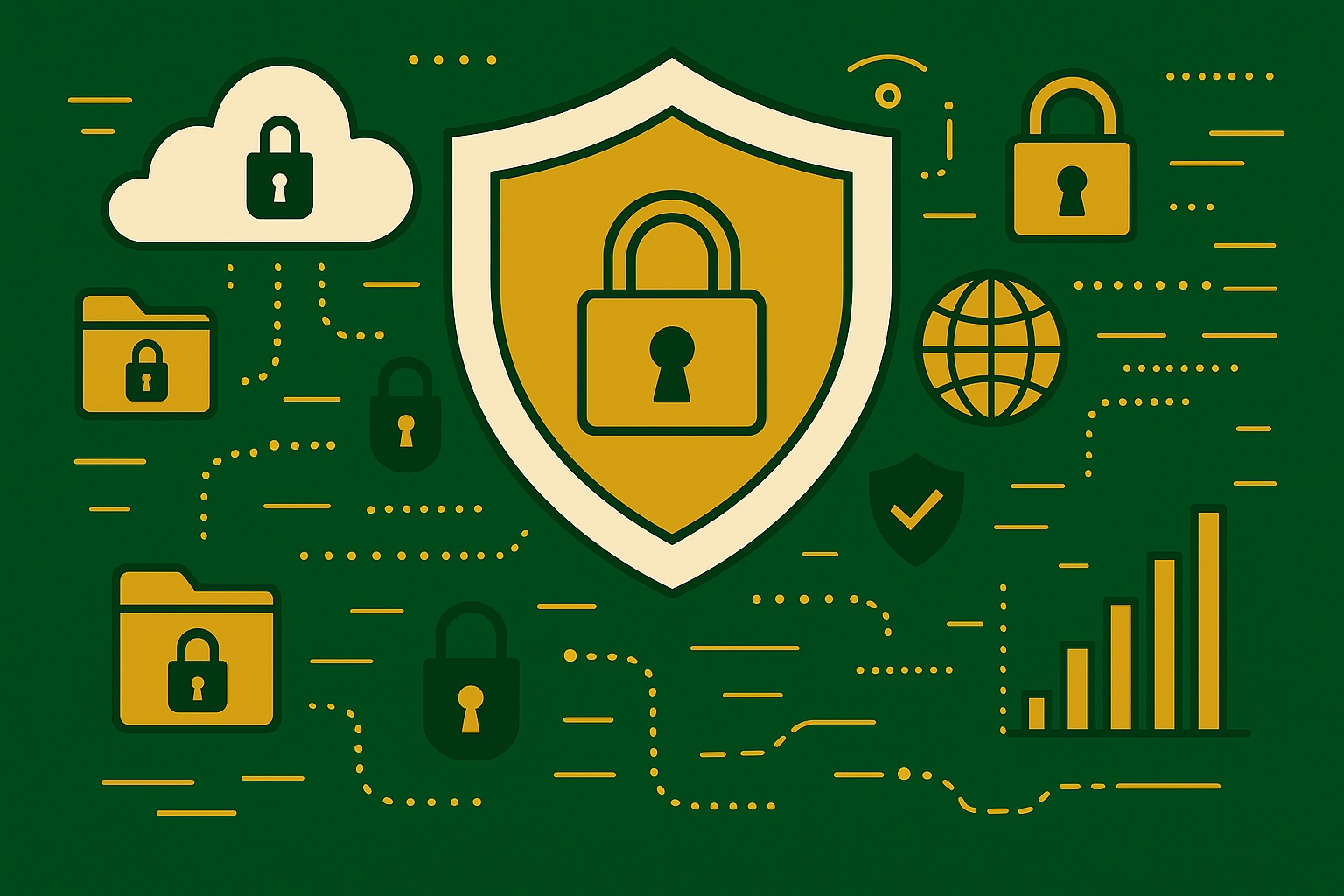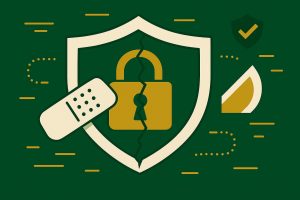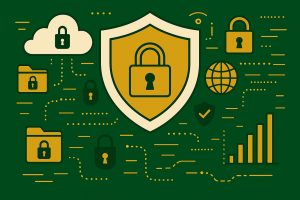In 2025, the digital landscape is more interconnected than ever, but this connectivity brings unprecedented risks. Cyber threats have evolved in complexity and frequency, targeting businesses of all sizes and industries. As organizations increasingly rely on digital infrastructure, safeguarding sensitive data has become a top priority for survival and growth. This article explores the rise of cyber threats and provides actionable strategies for businesses to protect their data in the year ahead.
The Evolving Cyber Threat Landscape
Sophisticated Attack Methods
Cybercriminals are leveraging advanced technologies such as artificial intelligence (AI), machine learning, and automation to launch more targeted and effective attacks. Phishing schemes, ransomware, and supply chain attacks have become more difficult to detect and prevent, often bypassing traditional security measures. The use of deepfakes and social engineering tactics further complicates the threat landscape, making it essential for businesses to stay vigilant.
Increased Attack Surface
With the proliferation of remote work, cloud computing, and Internet of Things (IoT) devices, the attack surface for businesses has expanded dramatically. Each connected device or application represents a potential entry point for cybercriminals, increasing the risk of data breaches and system compromises. Organizations must now secure not only their internal networks but also remote endpoints and third-party integrations.
Regulatory Pressure
Governments and regulatory bodies worldwide are enacting stricter data protection laws, holding businesses accountable for safeguarding customer information. Non-compliance can result in hefty fines, reputational damage, and loss of customer trust. Staying compliant with evolving regulations is both a legal obligation and a competitive advantage.
Key Cyber Threats Facing Businesses in 2025
Ransomware Attacks
Ransomware remains one of the most lucrative and disruptive forms of cybercrime. Attackers encrypt critical business data and demand payment for its release, often targeting organizations with weak security postures or those operating in essential sectors. The rise of ransomware-as-a-service (RaaS) platforms has lowered the barrier to entry for cybercriminals, making these attacks more widespread.
Phishing and Social Engineering
Phishing emails and social engineering tactics are becoming increasingly sophisticated, using personalized messages and fake websites to trick employees into revealing sensitive information or credentials. These attacks exploit human vulnerabilities, bypassing even the most robust technical defenses. Training and awareness are crucial in mitigating this threat.
Supply Chain Attacks
Cybercriminals are targeting third-party vendors and service providers to gain access to larger organizations. A single compromised supplier can provide a gateway to multiple businesses, making supply chain security a critical concern. Vetting partners and monitoring their security practices is essential for comprehensive protection.
Insider Threats
Not all threats come from outside the organization. Disgruntled employees, contractors, or partners with access to sensitive data can intentionally or unintentionally cause significant harm. Implementing strict access controls and monitoring user activity can help detect and prevent insider threats.
How Businesses Can Safeguard Their Data in 2025
1. Implement a Zero Trust Security Model
The Zero Trust approach assumes that no user or device, whether inside or outside the organization, should be trusted by default. Every access request is verified, and users are granted only the minimum permissions necessary to perform their tasks. This model reduces the risk of unauthorized access and limits the potential damage from compromised accounts.
2. Invest in Advanced Threat Detection and Response
Traditional security tools are no longer sufficient to combat modern cyber threats. Businesses should deploy advanced threat detection solutions that use AI and machine learning to identify unusual behavior and potential attacks in real time. Automated response systems can contain threats before they escalate, minimizing damage and downtime.
3. Strengthen Endpoint Security
With remote work and mobile devices becoming the norm, securing endpoints is more important than ever. Businesses should implement endpoint protection platforms (EPP) and endpoint detection and response (EDR) solutions to monitor and secure all devices connected to the network. Regular software updates and patch management are also critical to closing security gaps.
4. Educate and Empower Employees
Human error remains a leading cause of data breaches. Regular cybersecurity training and awareness programs can help employees recognize and avoid phishing attempts, social engineering, and other common threats. Simulated attacks and ongoing education foster a security-first culture throughout the organization.
5. Secure the Supply Chain
Organizations must assess the security practices of their vendors and partners to ensure they meet required standards. This includes conducting regular security audits, requiring compliance certifications, and establishing clear protocols for data sharing and incident response. A secure supply chain reduces the risk of third-party breaches.
6. Encrypt Data at Rest and in Transit
Encryption is a fundamental defense against data theft. By encrypting sensitive information both at rest (stored data) and in transit (data being transmitted), businesses can ensure that even if data is intercepted or stolen, it remains unreadable to unauthorized parties. Strong encryption protocols and key management practices are essential.
7. Develop and Test Incident Response Plans
No security system is foolproof, so businesses must be prepared to respond quickly to cyber incidents. A well-defined incident response plan outlines the steps to take in the event of a breach, including communication protocols, containment measures, and recovery procedures. Regular testing and updates ensure the plan remains effective as threats evolve.
8. Maintain Regulatory Compliance
Staying up to date with data protection regulations is crucial for avoiding legal penalties and maintaining customer trust. Businesses should appoint a data protection officer (DPO) or equivalent role to oversee compliance efforts, conduct regular audits, and implement necessary controls. Compliance is an ongoing process that requires vigilance and adaptability.
The Role of Technology Partners
Partnering with trusted ICT and cybersecurity providers can give businesses access to the latest tools, expertise, and threat intelligence. Managed security services, cloud-based solutions, and continuous monitoring help organizations stay ahead of emerging threats without overburdening internal teams. Collaboration with technology partners is a strategic investment in long-term security and resilience.
Looking Ahead: Building a Resilient Future
As cyber threats continue to evolve, businesses must adopt a proactive and adaptive approach to data protection. This means investing in advanced technologies, fostering a culture of security, and building strong partnerships across the digital ecosystem. By prioritizing cybersecurity in 2025 and beyond, organizations can safeguard their data, protect their reputation, and ensure sustainable growth in an increasingly digital world.






